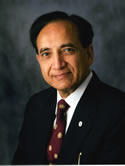| Abstract: |
BACKGROUND: The impact of lymph node metastases on prognosis in patients with oral cavity squamous cell carcinoma (OSCC) has been well recognized. However, accurate stratification of risk for recurrence among patients with lymph node metastases is difficult based on the existing staging systems. In the current study, the utility of lymph node density (LND) was evaluated as an alternative method for predicting survival. METHODS: Three hundred eighty-six patients who underwent neck dissection were included. The median follow-up was 67 months. Five-year overall survival (OS), disease-specific survival (DSS), and locoregional failure (LRF) rates were calculated using the Kaplan-Meier method. LND (number of positive lymph nodes/total number of excised lymph nodes) and tumor-node-metastasis (TNM) staging variables were subjected to multivariate analysis. RESULTS: Using the median (LND = 0.06) as the cutoff point, LND was found to be significantly associated with outcome. For patients with LND ≤0.06, the OS was 58 percent versus 28 percent for patients with LND >0.06 (P < .001). Similarly, the DSS for patients with LND ≤0.06 was 65 percent and was 34 percent for those with LND >0.06 (P < .001). On univariate analysis, pathologic T and N classification, extracapsular spread, and LND were found to be significant predictors of outcome (P < .001). However, on multivariate analysis, LND remained the only independent predictor of OS (P = .02; hazards ratio, 2.0), DSS (P = .02; hazards ratio, 2.3), and LRF (P = .005; hazards ratio, 4.1). LND was also found to be the only significant predictor of outcome in patients receiving adjuvant radiotherapy (P < .05). Within individual subgroups of pN1 or pN2 patients, LND reliably stratified patients according to their risk of failure (P < .05). CONCLUSIONS: After surgery for OSCC, pathologic evaluation of the neck using LND was found to reliably stratify the risk of disease recurrence and survival. © 2009 American Cancer Society. |










